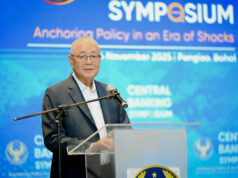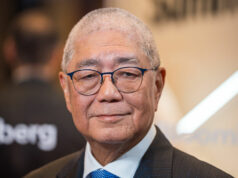Groups line up for land reclamation
By Arra B. Francia
Senior Reporter
PROPERTY DEVELOPERS and local government units (LGUs) alike are rushing to get a slice of the robust demand for real estate projects in the so-called Bay Area, with the Philippine Reclamation Authority (PRA) awash with almost two dozen applications to reclaim more land along the Manila Bay coastline.
Land reclamation is the process of recovering land from bodies of water like the sea, lake or riverbeds with the aim of putting the new land to productive use.
As of March 11, the PRA had 22 reclamation projects along Manila Bay’s coastline on its table, six of which have secured approval and one already in implementation stage (see map).
These projects are typically partnerships between a private developer and an LGU.
“They (companies) have proposals with the LGUs, so on their part, undoubtedly that is a business endeavor. On the part of the LGU, that is probably part of their economic trust,” PRA General Manager and Chief Executive Officer Janilo E. Rubiato told BusinessWorld in a Feb. 28 interview.
Since its establishment in 1977 under the late strongman Ferdinand E. Marcos, the PRA has accomplished one reclamation project in Metro Manila: the Bay City Reclamation Project, which was formerly called Boulevard 2000.
The Bay City Reclamation Project, composed mostly of business parks, encompasses the cities of Pasay and Parañaque.
One of the major landowners in the project is the SM Group, which property analysts say has contributed to the major boom in demand for projects in the Bay area.
“What SM did was to develop a practical mass of land in the area, and it has succeeded in doing that. They started with a church, then we had a mall. People started going to the Mall of Asia, and then people saw the start of office and condominium projects,” Colliers International Philippines Research Manager Joey Roi Bondoc said in a phone interview.
The Metrobank Group of Companies also had its stake in the Bay City Reclamation Project, where it has since put up a dealership for auto unit Toyota Motors Philippines, residential condominiums, as well as a mix of retail and commercial establishments.
OPPORTUNITY
Since then, demand for more property developments in the Bay Area has escalated.
For instance, D.M. Wenceslao & Associates, Inc. (DMWAI) — the developer of mixed-use estate Aseana City in the Bay Area — said that undeveloped land in its property now commands rates of P400,000-500,000 per square meter (/sq.m.).
“Reclamation projects are essentially real estate projects. The financial viability of the real estate potential of these projects is on a case-by-case basis. The benefit lies only if there is a high probability of the future development potential of the property,” DMWAI Chief Executive Officer Delfin Angelo C. Wenceslao said in an e-mail.
Colliers projects office supply to reach about 1.16 million sq.m. in the Bay Area in 2021, a 72% increase from a supply of 673,200 sq.m. by the end of 2018.
“If you were just to base it on supply and demand, it really shows you that this sublocation is really receiving a lot of strong demand. So the tendency for developers that have vast experiences in reclaiming land is to gravitate towards the Bay Area and we are seeing the growing opportunities there,” Mr. Bondoc explained.
This demand is primarily sustained by outsourcing firms followed by Philippine Offshore Gaming Operators (POGOs). The latter has been thriving over the past three years ever since President Rodrigo R. Duterte assumed office in 2016, whose administration paved the way for the institutionalization of the offshore gaming sector in the country.
Data from Colliers show that POGOs accounted for 30% of total office space absorption in Metro Manila in 2017 and about 20% in 2018. Despite the smaller share last year, absolute figures were at 310,000 sq.m. and 303,000 sq.m., respectively, showing the sustained demand from the sector.
The residential sector has also been riding along the robust demand for office spaces. Prices of condominium units have shot up in the previous years, with Colliers noting that the presence of Chinese employees in POGOs have prompted a 30-50% increase in rental rates for condominium units in the area.
For real estate consultancy services firm JLL Philippines, reclamation projects can provide several benefits to the Philippine economy.
“(Reclamation projects provide) revenue source for the government; better masterplanned communities which combine infrastructure with real estate; and, if successful, [a driver of] economic growth in the area,” JLL Philippines Head of Research and Consulting Janlo delos Reyes said in an e-mail.
Colliers’ Mr. Bondoc said the most immediate effect of these types of projects is the creation of jobs for Filipinos and foreigners alike.
“More office buildings, more condos being built — that means more construction workers being hired and basically if we have an economy that is growing 6-6.5% per annum, now there is an opportunity to develop more support facilities for that growth,” Mr. Bondoc said.
Mr. delos Reyes noted that Metro Manila still accounts for approximately 40% of the country’s economic output, resulting in the “agglomeration of business in the metropolis.”
The JLL Philippine executive noted that the limited amount of reasonably priced land within the region has prompted developers to resort to reclamation projects.
“Typically, investors would require huge tracts of lands for investments which is difficult to find in Metro Manila, in addition to the challenge of consolidation,” Mr. delos Reyes said.
Asked if land reclamation is a more efficient land banking strategy for developers, Mr. delos Reyes said that this depends on the market conditions of the area.
“Mature real estate markets and geography-challenged areas are best suited for reclamation projects. Meanwhile, land acquisition is a better strategy in emerging markets that still have a large number of available and undeveloped land,” he explained.
For DMWAI’s Mr. Wenceslao, reclamation becomes efficient only if there is a shortage of available land supply in a specific location “deemed essential” by businesses concerned.
Mr. Wenceslao explained: “The only reclamation worth exploring is responsible reclamation (which) can be defined by: in terms of adequately assessing the supply-and-demand justification for the project; if the proposed project is legally compliant (including environmental, etc.) and financially feasible; and finally, the project has to take into account the execution capability and track record of the relevant party/parties proposing the project.”
While the prospects of land reclamation seem promising, the Duterte administration has recently changed the rules for the approval of such projects.
The president signed last month Executive Order (EO) 74, transferring control and supervision of the PRA to the Office of the President (OP) from the Department of Environment and Natural Resources (DENR).
This also gave the PRA Governing Board the authority to approve all reclamation projects, a power previously held by the National Economic and Development Authority (NEDA), while the PRA had the right to continue to process, evaluate and recommend approval of proposed reclamation projects to the NEDA Board.
PRA’s Mr. Rubiato said that despite being transferred to the OP, the approval process for reclamation projects will probably remain the same for proponents.
“Hindi naman sabing mapapabilis in the sense na it would become reckless and negligent,” he explained.
“Kinuha lang ng presidente yung another layer of approval (It will not be streamlined in the sense that it would become reckless and negligent. The President just removed another layer of approval),” he added.
“As to the processes, we are guided by the timelines… we still have to comply with the requirements set by the DENR in so far as the issuance of the ECC (environmental compliance certificate) is concerned and walang nabago doon, ganoon pa rin iyon (and nothing changed, that requirement remains).”
The PRA has yet to release the implementing rules and regulations for EO 74, which will outline the new steps that proponents will take.
It will also be crafting a regional development plan that will serve as the master plan for all reclamation projects moving forward.




